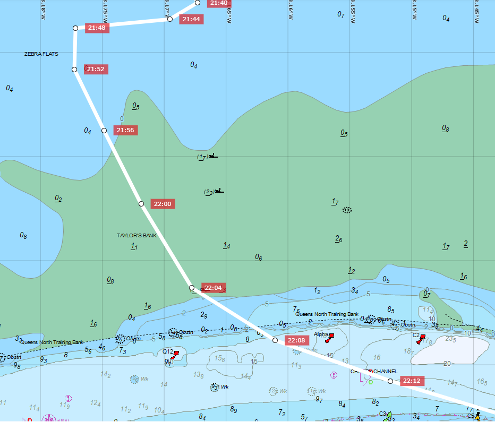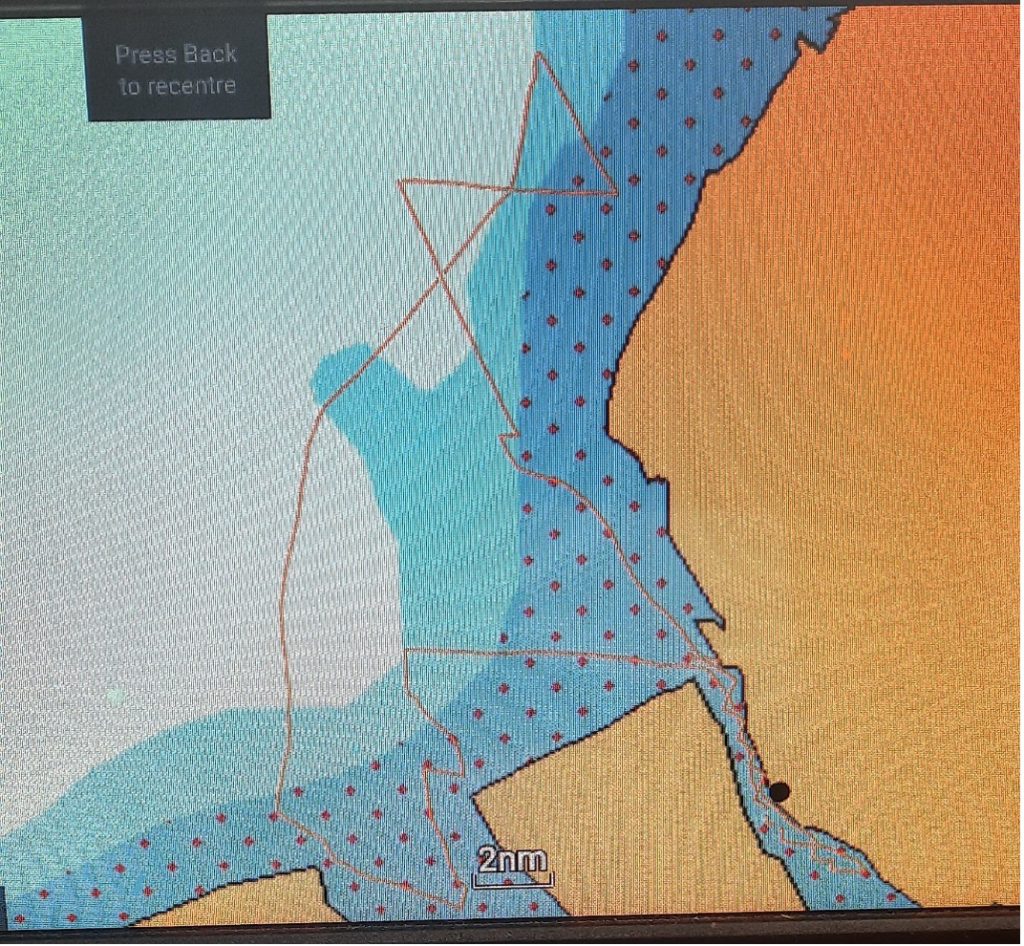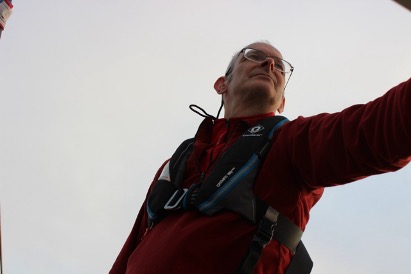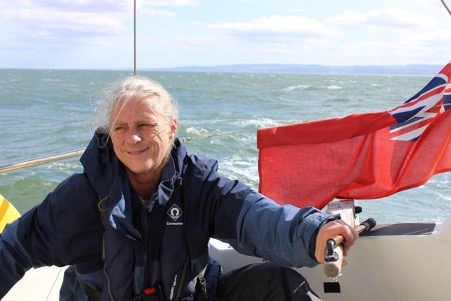At 0715 on Saturday 14th September, Phil Chapman, Kate Tee and Alistair Roaf aboard Lillebolero locked out of Brunswick to attempt the Three Rivers Challenge.
The inshore waters forecast was southwest force four to six, occasional seven later, slight/moderate/occasionally rough. However, with the Liverpool Bay given some protection by the Welsh hills it was worth a go.
The sails were quickly hoisted, and we departed Pluckington buoy at 07:19:00 for a beat with the last of the flood tide to G11. We rounded G11 at 0810, hoisted the cruising chute and headed for the Rock Channel. While sailing out of the Mersey, Kate made us a stonking cooked breakfast.
As we passed Wallasey Town Hall, the wind, which was forecast to veer at 1100, veered an hour earlier than predicted. So, it was spinnaker down and genoa out. We passed Brazil buoy at 1007 and headed out of the Rock Channel helped by the ebb tide. At 1039, we were at the top of the Rock Channel. The original plan was to have headed straight to wards HE2 but that put the wind on the nose. Instead of short tacking, we did a long tack around East Hoyle Spit. The wind was now force five with the swell building.
We headed inshore and passed HE2 buoy at 1210 hours. After passing HE3 it was a short beat to clear Hilbre Island, against the tide. We passed Hilbre Island at 1300 and were close hauled and then fetching up the Dee. The wind was not easing; so, we put a reef in the main and few rolls in the genoa. At Dee no.1, we hardened up and crossed south of Salisbury Middle bank. The chart is little help here, so we were using satellite photos of the sandbanks and the echosounder to feel our way to the deep water which begins at West Bar buoy. It was one and a half hours before low water which was not the best time to go creek crawling. As we headed north towards West Bar, Lillebolero accelerated with the ebb tide and wind which now meant we were doing over six knots in two metres of water! It was a relief when Phil started to count up the echosounder depth. We passed West Bar buoy at 1350 and reached along ‘Wild Road’ out of the Dee at seven knots.
The next excitement was the swatchway between West Hoyle and West Spit banks. It is a very narrow channel. Fortunately, it is buoyed and charted. At 1435, we had cleared the Dee’s sandbanks and set our course for Gut buoy. The wind was around a broad reach/run and we made a good speed passing through Burbo Bank Wind Farm passing Bar light vessel at 1600.
The quartering waves were now 1.5 metres in height making steering on the tiller more like rowing. This didn’t stop Phil cooking and serving us lasagne as the boat cork screwed in the waves.
We rounded Gut buoy, to starboard, at 1805, and commenced the ten-mile beat back to the Mersey. Kate stepped up to the challenge and did most of the steering for this leg while the men put their feet up. Even by taking a shortcut over Taylor Bank and training wall to join the Main Channel between Alpha and Q12 buoys, we were too late for the tide. High water was 2106 and we entered the channel at 2212. It was an ever-slower reach, then fetch as we proceeded up the Main Channel with the adverse tide increasing and the wind decreasing.
We reached Brazil buoy at 0010 and came to halt against the tide. We tried to fight it for 40 minutes before giving up and going to anchor half a mile north of perch rock near the training wall at 0058. We were exhausted so it was straight to sleep to wait for the tide to change. The tide turned at 0500; however, it was raining, so we rolled over and got another hour’s sleep.
We weighed anchor at 0605 and beat up the Mersey with the flood tide. Our final two tacks were around Dukes buoy and off Cammel Laird’s before arriving back at Pluckington at 07:09:55 which was 23 hours: 50 minutes: 55 seconds after we departed. We were tired but pleased with what we had achieved. According to the GPS, we had travelled 85.6 miles.

Figure 1: Passage in and out of the Dee around West Bar buoy.

Figure 2: Taking a short cut by crossing the Taylor Bank and training wall.

Figure 3: Track as recorded on chart plotter.

Phil trimming the main sheet.

Kate on the helm with the Welsh Hills in the background.
Words by Alistair Roaf
